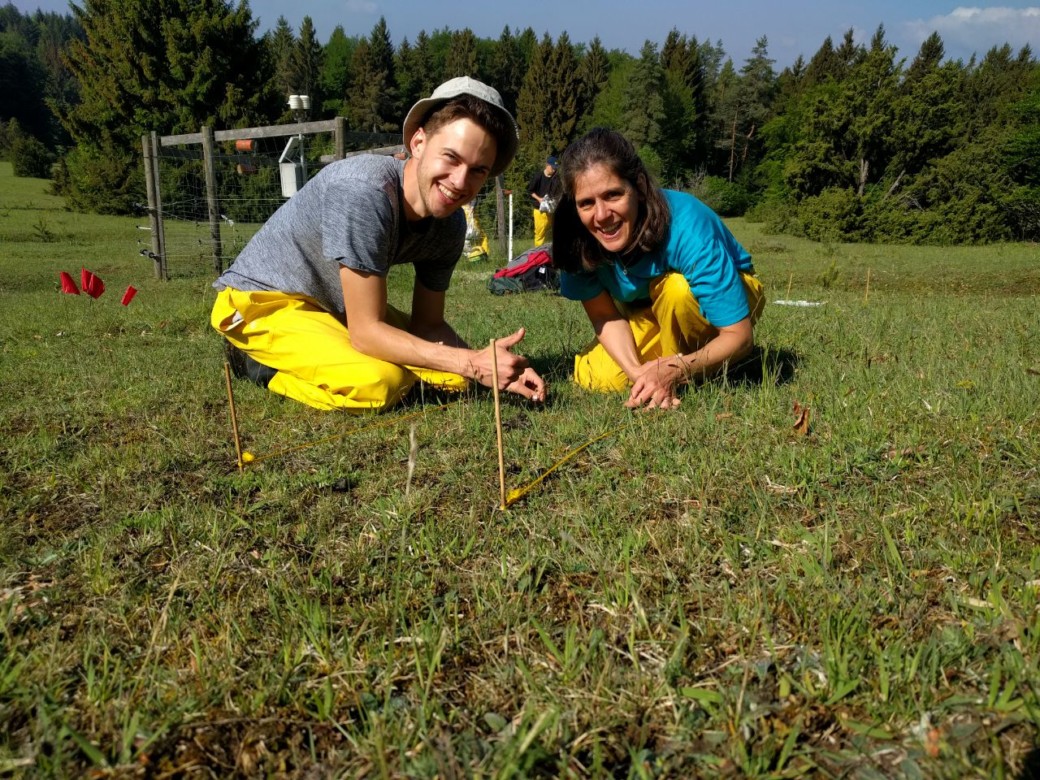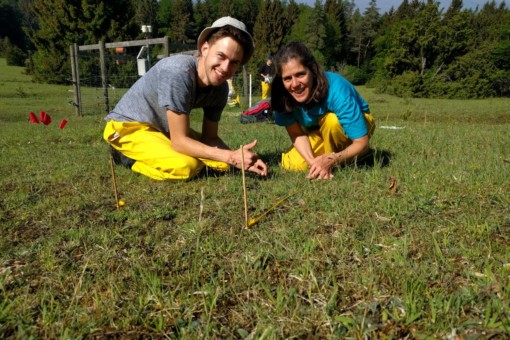Plant diversity and plant-related processes

Since the beginning of the Biodiversity Exploratory program, the core project Botany examined the diversity of vascular plants, lichens and mosses in both grassland and forests, and as a major ecosystem process the productivity of grasslands. As primary producers plants are fundamental to understand the effects of land use on ecosystem processes because many land-use effects will be mediated via changes in plant diversity with cascading effects through the entire food web.
The main goals of the present project are:
- to provide long-term data on the diversity of plants in grassland and forest to understand the effects of land use on plant diversity,
- to estimate intraspecific variation of selected functional traits of plants in order to provide an additional level of diversity,
- to provide of the above-ground productivity of grasslands and the understorey vegetation in forests as a major ecosystem process of plants,
- to provide the diversity and aboveground productivity on all agricultural fields as a major comparative ecosystem for plants
- to support the grassland experiments REX and LUX, which manipulates land-use intensity and propagule availability, and the forest gap experiment FOX, which created forest gaps to study the understorey vegetation and forest regeneration.
Moreover, the long-term data series of plant diversity and ecosystem processes allow us to estimate the stability of the community, regenerative capacity of communities after disturbances, and temporal trends in community composition and the abundance of individual species. Together with the monitoring, these data provide important baseline information for other projects, as many taxa and ecosystem processes will be directly or indirectly influenced by plant-related changes.
All core projects provide important basic information on land use, diversity and ecosystem processes (long-term monitoring). These are made available to the sub-projects in each phase for researching more in-depth questions.
Services in the current phase
In the 7th phase (2023-2026), the core project Botany provide basic information on:
- Forest vegetation monitoring in spring and summer on 20 x 20 m on all EPs and in the FOX experiment
- Grassland vegetation monitoring in spring on 4 x 4m on all EPs and in the REX/LUX experiment
- Vegetation height on all grassland EPs and in the REX/LUX experiment
- Biomass production in grassland on 1 x 1 m on all EPs and in the REX/LUX experiment
- Biomass production in the forest understorey on all forest EPs
- Vegetation monitoring und biomass production an all agricultural fields
Services in the former phases
In previous phases, the core project Botany also provided basic information on:
- Bryophyte diversity on all grid plots in 2008/9
- Lichen diversity on all grid plots in 2008/9
- Fungal pathogen diversity on all grassland EPs in 2012
- Deadwood fungi diversity on all forest EPs in 2012
- Estimation of dispersal limitation on all grassland MIPs in 2012 and 2019
- Phenotypic plasticity of selected grassland species measured in a common garden in 2012
- Soil seed bank analysis on all grassland MIPs in 2015
- Estimation of intraspecific trait variation of the ten most common species in all EPs in 2017/18
- Biomass production in the forest understorey on all forest EPs
- Soil seed bank on all forest plots and in the FOX experiment
In grassland, land-use intensity reduced grassland diversity and increased productivity. While diversity was mainly affected by the mowing intensity, productivity was affected by fertilization and soil conditions. Furthermore, we found evidences for dispersal limitation in many grassland species, indicating that many grasslands are not saturated and their diversity could be increased. Moreover, the negative effect of land use on plant diversity lead to a more stable community composition in grasslands at high land use, whereas communities varied over time more at low land use.
In forests, management had a positive effect on plant diversity, mainly driven by management-related disturbances, e.g. logging trails. Among the species promoted by forest management were mostly light-demanding species in the understorey, whereas typical forest species responded more negatively to forest management. While overall the plant diversity did not change over the last 15 years, diversity was strongly affected on individual plots because of either windthrow or logging.










